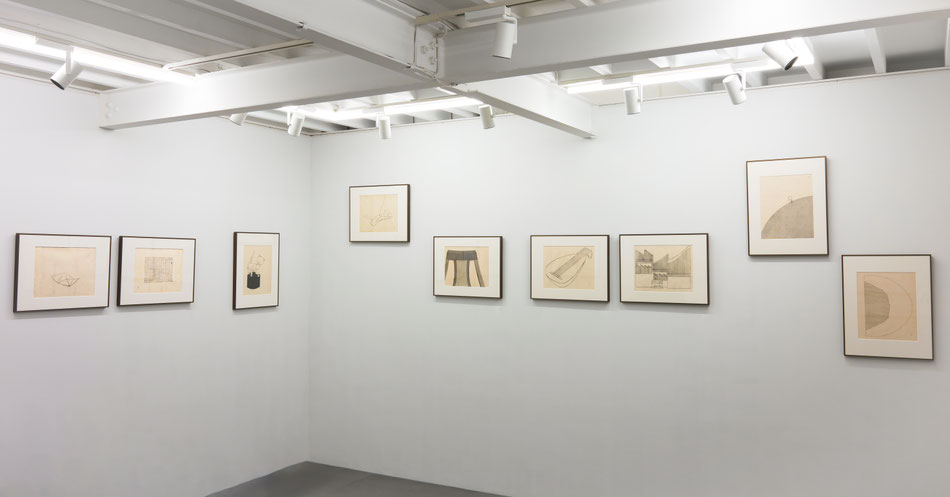- Home
- News
- Biography
- Works
- Exhibition
- 個展「物は人」
- 個展「心と目と行いと生活で」
- 個展「あることとないことが眩しいようにぴったりだ」
- 個展「ガーディアンズ」
- 個展「地上は思い出」
- 個展「こちら未来」
- 個展「十年一日」
- 個展「昔は今」
- 個展「今は昔」
- 個展「思い出はどこへ」
- 個展「何を見ても何かを思いだす」
- グループ展「サマーパルス」
- グループ展「モノローグ」
- グループ展「Prints & Collage」
- グループ展「ともにある場所へ」
- イベント「Spiral Xmas Market」
- イベント「ART FAIR ASIA FUKUOKA」
- イベント「クリスマスアートマーケット」
- イベント「Independent Tokyo」
- イベント「SICF」
- Contact
- 個展「物は人」
- 個展「心と目と行いと生活で」
- 個展「あることとないことが眩しいようにぴったりだ」
- 個展「ガーディアンズ」
- 個展「地上は思い出」
- 個展「こちら未来」
- 個展「十年一日」
- 個展「昔は今」
- 個展「今は昔」
- 個展「思い出はどこへ」
- 個展「何を見ても何かを思いだす」
- グループ展「サマーパルス」
- グループ展「モノローグ」
- グループ展「Prints & Collage」
- グループ展「ともにある場所へ」
- イベント「Spiral Xmas Market」
- イベント「ART FAIR ASIA FUKUOKA」
- イベント「クリスマスアートマーケット」
- イベント「Independent Tokyo」
- イベント「SICF」

Solo exhibition "If all time is eternally present"
More than 30 new and old works will be exhibited.
September 2 - September 13, 2025
Minamiaoyama Room
1-11-39 Minamiaoyama, Minato-ku, Tokyo, Japan
September 23 - October 5, 2023
Gallery Sekiryu Matsumoto
2-17-10 Chikuma, Matsumoto City, Nagano, Japan
青山
松本
作家ステートメント
もしもあらゆる時がそこにあるなら
─ ただそこに在る物たち ─
物は喋りません。
ただそこに在るだけ。
それらは、確かに誰かの手にふれられ、使われ、置かれ、忘れられ、
あるとき、また誰かに見つけられてきました。
その静かな佇まいに、私は、人の気配を見出します。
過去、現在、未来——
時間はまるで分かたれているかのようでいて、
実は互いに滲み合いながら、ひとところに佇んでいるのかもしれません。
現在の時も過去の時も
たぶん未来の時の中にあり、
また未来の時は過去の時に含まれる。
― T.S.エリオット『四つの四重奏曲』「バーント・ノートン」より(森山泰夫訳、大修館書店)
かたちにならないもの——
記憶や経験、思い出。
私はそれらを、物を通して描いています。
描くことで、誰かが生きた時間を、そっととどめたいのです。
周囲を見渡せば、絶えず更新されつづける情報ばかり。
動かず、ただそこに在る物を見つめる時間は、
私たちにとっていつのまにか、貴重なものとなっていました。
物には、「流れ去らないこと」でしか伝えられない記憶が宿っています。
日用品、雑貨、楽器、おもちゃ、ぬいぐるみ……
誰かと共にあった物たち。
そして、これから誰かと出会っていく物たち。
それらは私にとって、単なる描く対象ではなく、誰かの時間を記憶しつづける存在です。
─ 触れるように描く ─
私は、和紙に描いています。
目の前に物を置き、視線でなぞるようにして。
油彩による転写は、パウル・クレーが編み出した技法。
油絵の具を塗った紙を転写紙のように扱い、線を写し取ります。
版画の領域ではありますが、複製は出来ません。
線による構成は、葛飾北斎の教本から学びました。
定規を用いて、物の骨格をとらえ、
見えない構造を紙の上で組み立てていくかのように。
図と余白が呼吸を交わし、人の時間が折り重なってゆくような画面を、私は求めています。
─ 今、なぜ絵なのか ─
情報が溢れ、手のひらで消費されていく今。
刺激的で感情的な情報がうねりとなって社会に広がるなかで、
沈黙や、物をじっと見つめる時間が、私たちからこぼれていきます。
美術もまた、「没入体験」や「映え」のような一時の波に呑まれ、
その本来の静けさや、物と向き合う行為の深さが見過ごされているように感じます。
絵は、すぐには答えてくれないかもしれません。
しかし、ときに沈黙し、ときに遠回りに、
私たちの内側にある「なにかにじっと向き合いたい」という感覚に、
深く静かに、呼応してくれます。
私は絵を描きます。
概要
江波戸の制作は、身近な物に淡々とした視線を注ぎ、描くことによってその存在がまとう「時間」をとらまえようとする点で一貫しています。近作では、人が感情移入しやすい目や顔のあるモチーフや、極端に余白が強調された構図は影をひそめ、絵づくりにおける丹念さや洗練の度あいが増しています。また、以前はヴァリエーションのあった素材や技法の選択も、つやのある生成りの三椏紙(みつまたし)に、転写によって黒色の線を写し取りながら描く方法へと、ほぼ収斂されています。そこには古今の美術のみならず、広く視覚イメージから学びをえながら、インパクトや「映え」によらずに、「物」を、そしてそこに宿る「人」の気配を描くことに注意をかたむける描き手としての取捨選択があります。
鑑賞者にとって、江波戸の作品に触れることは、物と静かに向きあう画家の視線をなぞる時間です。そこでは視ること、描くことがそのまま、愛でること、慈しむことへと連なっていきます。それはまた、おのおのが生きる、今ここに流れる時間、遠く過ぎ去った時間、そしてやがて訪れる自分不在の時間に思いをいたす場ともなるはずです。
本展では油彩転写によるモノタイプを中心に新作20点を展覧いたします。この機会にぜひ会場にてご高覧ください。
Artist Statement
If All of Time Were Present There
–Things That Are Simply There–
Objects don’t speak.
They're simply there.
They have surely been touched, used, placed, and forgotten by someone,
and at times, discovered again by someone else.
In their quiet presence, I sense traces of human life.
Past, present, future—
Time may seem to be divided,
but in truth, they might all blur into one another, lingering together in a single place.
Time present and time past
Are both perhaps present in time future,
And time future contained in time past.
— T. S. Eliot, “Burnt Norton” from Four Quartets
Formless things—
memories, experiences, and nostalgia.
I depict them through objects.
By painting, I hope to carefully preserve the moments someone has lived.
When one looks around, there is a never-ending stream of new information.
Time spent quietly gazing at things that simply exist, unmoving,
has somehow become something precious to us.
Objects contain memories that can only be conveyed by not being swept away.
Everyday items, trinkets, musical instruments, toys, stuffed animals...
Objects that once shared time with someone,
and those yet to encounter new owners.
To me, they are not merely subjects to draw, but vessels that continue to hold the memories of those moments.
─ Drawn as if touching ─
I draw on washi paper.
I place objects before me and trace their forms with my gaze.
The oil paint transfer technique was devised by Paul Klee.
Paper coated with oil paint acts like transfer paper, capturing lines drawn on it.
Though this technique falls within the realm of printmaking, it does not allow for reproduction.
I studied line composition from Katsushika Hokusai’s drawing manual.
Using a ruler, I capture the framework of objects,
as if assembling their unseen structures on paper.
I strive to create a composition where the shapes and the blank spaces breathe together,
creating a scene where human moments intertwine.
─ Why painting, now? ─
Now is a time when we are overwhelmed by information, consumed in the palm of our hands.
As waves of sensational and bombastic information swell throughout society, moments of
silence and quietly observing things are slipping away from us.
Art, too, seems to be swept up in passing trends like “immersive experiences” and appealing to
the masses, while its inherent quietness and the depth of engaging with objects are increasingly
overlooked.
Paintings may not answer us immediately.
However, sometimes in silence, sometimes by taking detours,
they quietly respond to the feeling within us of “wanting to calmly encounter something.”
They respond deeply and quietly.
I paint.
Overview
We are pleased to present Yoko Ebato’s solo exhibition—her second with us in two years—at Gallery Sekiryu. The exhibition will travel to both of our venues: Minami-Aoyama in Tokyo and Matsumoto, Nagano Prefecture.
Ebato’s practice has remained consistent in her quiet, observant gaze toward familiar objects. Through drawing, she seeks to capture the time held within the presence of things. Earlier works often featured emotionally engaging motifs—such as faces or eyes—and made dramatic use of blank space. The newer works, by contrast, reveal a heightened sense of refinement and meticulousness. Along with this shift in imagery, her choice of materials and techniques has also changed. Whereas she once worked with a wider range of them, Ebato has now largely settled on a process that involves transferring black lines onto subtly glossy, unbleached mitsumata paper—a traditional Japanese washi made from the bark of the mitsumata plant. This shift reveals a conscious and deliberate choice: one rooted in an artistic attitude that distances itself from visual impact or mass appeal, while instead focusing intently on the presence of things—and the traces of people that dwell within them.
For viewers, encountering Ebato’s work becomes an act of tracing the artist’s calm, attentive gaze toward the object. In her hands, to see and to draw become gestures of care and affection. And in doing so, the viewer is also invited to reflect on their own present—on this moment in time, on a past now distant, and on the future yet to come, in which they themselves may no longer be.
This exhibition features 20 new works, primarily monotypes created using the oil transfer technique. We warmly invite you to experience them in person.





















